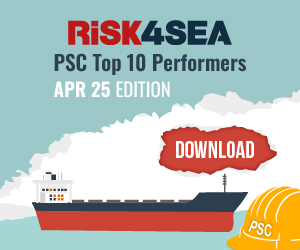Governments are expected to finalise talks on a global carbon price on international shipping, at a two-part summit of the UN’s International Maritime Organization (IMO) in London on 31 March – 1 April and 7-11 April.
There’s huge political momentum to get a carbon levy across the finishing line at the IMO, with over 60 countries from Europe, Africa, Asia, the Pacific and the Caribbean, as well as the industry, supporting this mechanism. They have indicated a price range of $18-150 for the future levy.
However, a persistent minority, including COP host Brazil, China, and South Africa, continue to favour a much weaker mechanism based on credit trading (the IMSF&F), which research finds is insufficient to meet the sector’s climate targets.
ISWG-GHG-19 is a test of IMO’s credibility. Without a universal GHG levy, IMO’s climate targets are meaningless. This is the fastest, most effective, and lowest-cost way to ensure a just and equitable transition, where no one is left behind. Delays cost lives. The time for action is now.
…said Ambassador Albon Ishoda, Marshall Islands Special Envoy for Maritime Decarbonization.
Pacific and other climate-vulnerable nations rejected it, arguing that it failed to uphold the IMO’s commitment to a just and equitable transition. They claimed it would unfairly generate revenue from developing countries’ older fleets, only to redistribute it as subsidies to wealthy nations’ newer fleets, including fossil LNG ships.
In addition, at the February ISWG-GHG-18 negotiations, the Norwegian Chair proposed Singapore’s J9 paper as a potential “bridge” solution between countries. This proposal combined carbon credit trading with two different carbon intensity bands within a fuel standard.
Emma Fenton, Senior Director, Climate Diplomacy, Opportunity Green commented that the future of clean shipping hangs in the balance. Whether or not the IMO guides this global industry to decarbonise fairly, fast, and far enough, depends on countries holding their nerve to support an ambitious outcome in the coming weeks.
Fenton highlighted that an ambitious, flat-rate levy on shipping’s greenhouse gas emissions is the only way to decarbonise the industry while leaving nobody behind. With increasing private sector support, Fenton urged delegates to now stand in solidarity with climate vulnerable countries and push for this ambition.
Moreover, the International Chamber of Shipping (ICS) put forward its own bridging proposal. This plan, which has backing from China and Brazil, suggests a single flat fee for emissions to provide clarity and certainty about revenues for a just transition. The proposal would exempt only vessels using Zero or Near-Zero fuels.
A recent report from UCL’s Energy Institute Shipping and Oceans Research Group has outlined some of the potential implications of the now three main candidate policy options following the last IMO ISWG-GHG meeting in February 2025 (ISWG-GHG 18) in stimulating such an energy transition.
The UCL analysis shows that IMO member states are coalescing around three main policy scenarios:
- an attempted bridging option put forward by the chair at ISWG 18, often referred to as ‘J9’ or IMSF&F with multiple GFS/RU bands (henceforth, IMSF&F with banded RUs) that does not have a levy component
- a weak or low levy with GFS
- a strong or high levy with GFS
Ambassador Albon Ishoda, Marshall Islands Special Envoy for Maritime Decarbonization, said: “ISWG-GHG-19 is a test of IMO’s credibility. Without a universal GHG levy, IMO’s climate targets are meaningless.”
This is the fastest, most effective, and lowest-cost way to ensure a just and equitable transition, where no one is left behind. Delays cost lives. The time for action is now.
…the Ambassador highlights.
Bastien Bonnet-Cantalloube, Expert on Decarbonisation of Aviation and Shipping, Carbon Market Watch, pointed out that the IMO is at a crossroads. Next week and in early April, governments must come together and agree on measures that can help drive the transition to zero-emission fuels and technologies and reach the IMO GHG Strategy objectives.
The policies agreed during the meeting cannot afford to be a drop in the ocean. Anything less than a high and effective levy will fail to deliver the incentives needed for shipping’s decarbonisation and a just, equitable transition. So far, so-called ‘bridging’ proposals on the table fall short and barely make a ripple—this is the moment to raise the bar.
…said Bastien Bonnet-Cantalloube.
In parallel to the levy and the GFS, governments are also negotiating on the revision of the existing framework for energy efficiency of ships – Carbon Intensity Indicator (CII). Experts argue that delivering the IMO’s Revised Strategy will require all three components: an ambitious and equitable levy of at least $150/tonne GHG; a strong fuel standard, and an improved CII.





























































